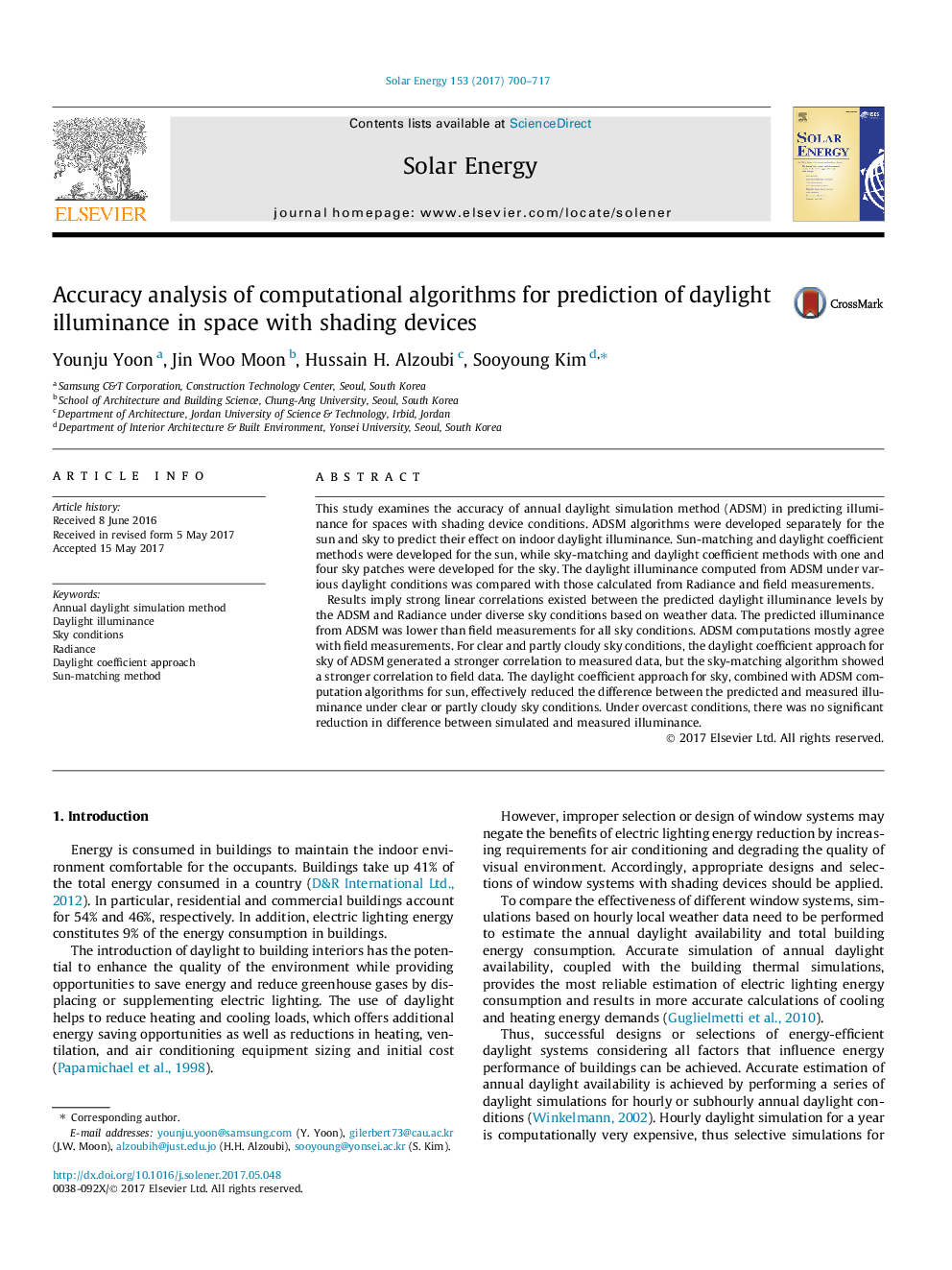| Article ID | Journal | Published Year | Pages | File Type |
|---|---|---|---|---|
| 5450753 | Solar Energy | 2017 | 18 Pages |
Abstract
Results imply strong linear correlations existed between the predicted daylight illuminance levels by the ADSM and Radiance under diverse sky conditions based on weather data. The predicted illuminance from ADSM was lower than field measurements for all sky conditions. ADSM computations mostly agree with field measurements. For clear and partly cloudy sky conditions, the daylight coefficient approach for sky of ADSM generated a stronger correlation to measured data, but the sky-matching algorithm showed a stronger correlation to field data. The daylight coefficient approach for sky, combined with ADSM computation algorithms for sun, effectively reduced the difference between the predicted and measured illuminance under clear or partly cloudy sky conditions. Under overcast conditions, there was no significant reduction in difference between simulated and measured illuminance.
Related Topics
Physical Sciences and Engineering
Energy
Renewable Energy, Sustainability and the Environment
Authors
Younju Yoon, Jin Woo Moon, Hussain H. Alzoubi, Sooyoung Kim,
